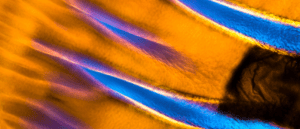Testing gene therapies on whole human livers

Researchers have used a whole human liver as a model for testing adeno-associated virus-based gene therapies.
Researchers at the Children’s Medical Research Institute (CMRI; Westmead, Australia) have recently trialed a new way to test novel gene therapies by using a whole human liver. This could help developers better predict how these gene therapies will perform inside the human body.
Gene therapies are a rapidly advancing branch of medicine, providing new opportunities to treat a range of genetic disorders by altering gene expression. Approaches generally involve replacing a gene that is defective or absent in patients’ cells with a working copy. The most widely used platforms for delivering these functional genes are adeno-associated viruses (AAVs), a type of small, non-pathogenic virus that can be engineered to contain the therapeutic DNA sequence.
While AAV-based gene therapies offer a promising avenue for treating genetic disorders, few have been approved for human use and they are generally limited in their clinical applications, with very high AAV doses necessary for therapeutic effect.
The development of viable AAV-based gene therapies is partially hindered by the limitations of current models. Animal models, while useful for evaluating the safety and biodistribution of candidate gene therapy products, differ from humans in the complexities of their physiological processes.
However, the CMRI research group has successfully used a new model that promises a more accurate representation of human physiology – a whole human liver. In this novel approach, donated livers deemed unsuitable for transplantation were preserved outside of the body at normal human body temperature (36°C) and perfused with a blood-based perfusate containing a number of AAV variants already used in clinical applications targeting the liver.
The researchers used next-generation sequencing to monitor the effect of the different AAV-based gene therapies on each liver. They were able to maintain the livers like this for a total of eight days – deemed a reasonable window for experimentation to gauge at least the short-term effects of the therapies. This innovative model will facilitate more accurate predictions for outcomes when candidate therapies are administered to patients.
“This is very exciting for us because now, for the first time, we can assess the function of gene therapeutics directly in the clinical target organ itself – the human liver,” enthused lead researcher Lszek Lisowski. “Together, this work broadens the repertoire of preclinical models available for conducting liver-directed vector studies and allows us to minimize the use of animals….Ideally this will bring us closer to more efficient gene therapies for diseases that currently have limited, if any, treatments.’’
This promising model could allow for better dosage estimations and predictions of toxic effects for AAV-based gene therapies in development. It could also open the door for the expansion of precise gene therapeutics to treat a wider range of disorders.
You may also like:
 Finding a promising hydrogel glue in crustacean shells
Finding a promising hydrogel glue in crustacean shells
Scientists have utilized a polymer found in crustacean shells to improve the medical potential of hydrogels.